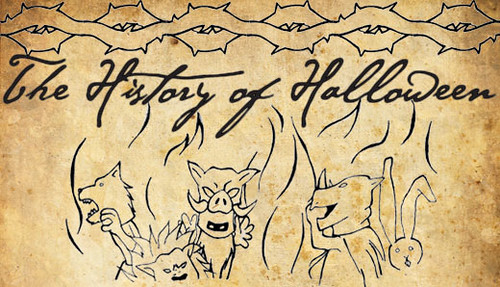The History of Halloween
Published: Wednesday, October 29, 2008
Updated: Saturday, September 12, 2009 03:09

"It is a holiday that celebrates evil stuff. How can someone take pleasure in that? People dress up in scary costumes and do bizarre things," said Yevgnya Lomakina, a UMass Boston sophomore majoring in French. "There is no historical point."
Au contraire, Lomakina, au contraire. For many cultures, including the Celts, Halloween does indeed have a historic origin that has spread and been appropriated by the victors of history.
The American version of Halloween originates in the Celtic Druidic-the pre-Christian priestly equivalent-fire festival known as Samhain of Ireland. In Scotland, the celebration was called Hallowe'en or Hallow tide, and for the Welsh, it was the Night of the Winter Calends. These festivals celebrated the life and death cycle, together culminating in All Hallows Eve.
The Celts lived 2,000 years ago in what are now Ireland, England, and Northern France. Since November first marked the end of the summer and the beginning of the cold season, it was also considered a time of death. The Celts celebrated Samhain on the eve of October 31 because on that night, the world of the living and dead intertwined; believers expected ghosts of the dead to return to the earth. Celts used the Halloween spirits to make predictions about the future, possibly explaining their acceptance in Celtic culture and the perpetuation of the festival.
According to history.com, "These prophecies were an important source of comfort and direction during the long, dark winter."
During the sacred, sacrificial bonfires held by Celts that saw corpses and animals incinerated, worshipers would attend adorned in costumes made of animal skins and heads; another possible origin of costumes that now go hand in hand with the Western tradition of Halloween.
The Roman Empire also had an influence on Halloween.
By 43 A.D., After the Romans had conquered the Celtic territories, they incorporated a festival day into the Celt calendar to celebrate Pomona, the Roman goddess of fruit and trees; a possible explanation as to why apple bobbing became a tradition around Halloween.
By the time Christianity spread across Europe in 800 A.D., Roman Catholics, Episcopalians, and Lutherans began to celebrate All Hallows Day, or a day meant to sanctify to honor the saints. To replace the pagan festival of the dead, Pope Boniface IV instituted All Saints Day. The night before All Hallows Day was, of course, All Hallows Eve; what is today widely recognized as Halloween.
A UMB student remembers all the candy he would get trick-or-treating on Halloween.
Trick-or-treating had Irish roots, too. In 1846, the Irish fled Ireland to America because of the potato famine of that year. "Taking from Irish and English traditions, Americans began to dress up in costumes and go house to house asking for food or money, a practice that eventually became today's 'trick-or-treat' tradition."
Traditionally, All Souls Day was marked a day to honor the dead. Like Samhain, there were bonfires, parades, and costumes, and people would dress up as angels, saints or devils."
But when American Protestants tried to impose stringent rules on Halloween costumes and celebrations, Halloween was appropriated from the more gruesome festival known for celebrating ghosts and witchcraft to a more demure community holiday that celebrates the beginning of the fall season. Halloween games, food, and costumes were festive customs that remained unchanged during the moral manipulation of Halloween.
And by the 1930s, Halloween had become a secular, community-based holiday.
Despite the festival's very political history, people of all ages-from toddlers to seniors-still enjoy dressing up in scary costumes, often times to play characters that are out of this world, just for fun.
No comments:
Post a Comment